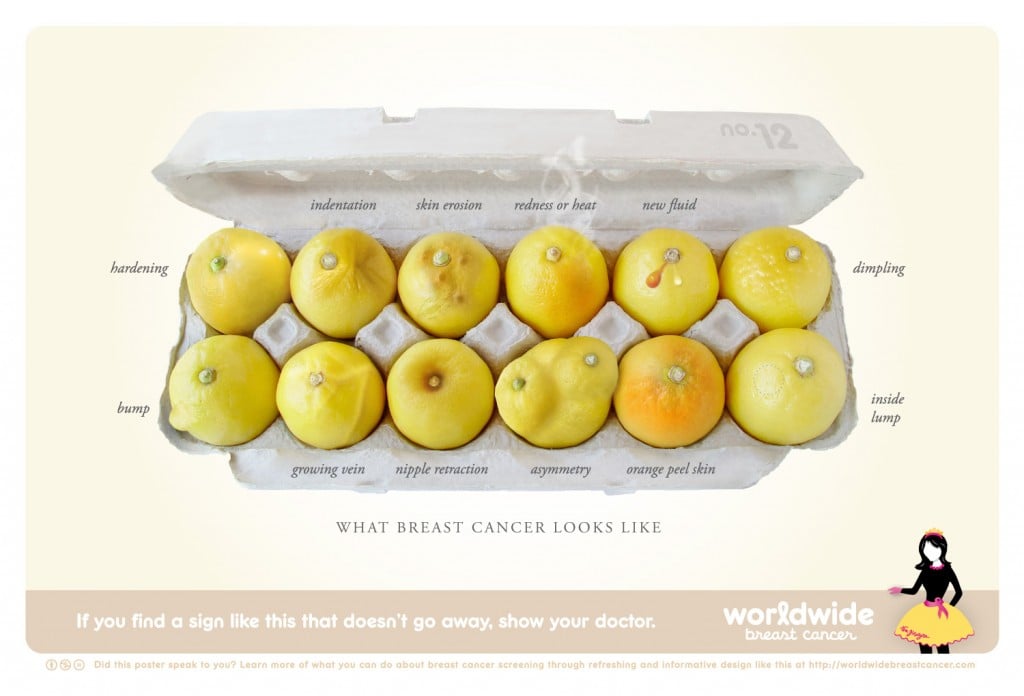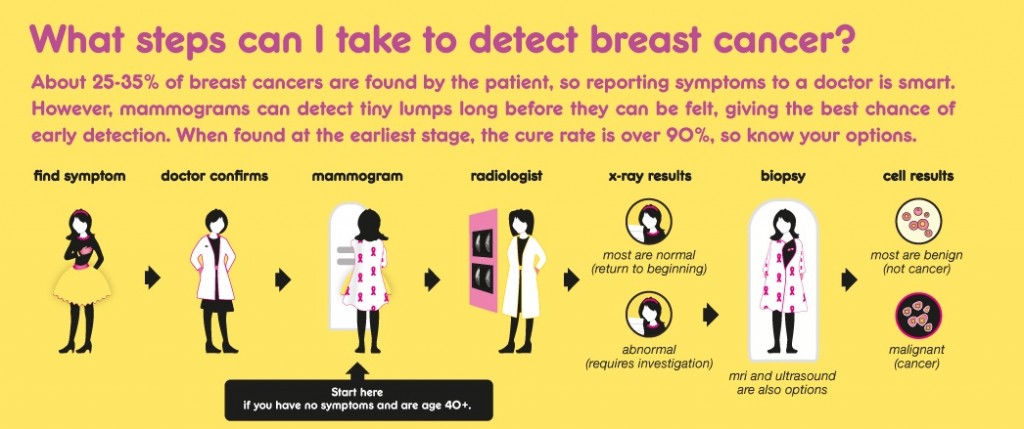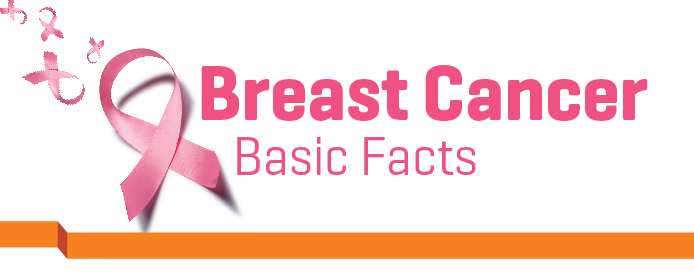What is breast cancer? The human body is made up of many cells. Every day, these cells multiply to replace old cells in a controlled manner. When this control is lost, the cells multiply in an unorganized method and it is known as cancer. Breast cancer forms when these group of cells form to produce a mass known as a tumour. While not all tumours are bad, certain tumours can invade into normal breast tissue and spread to lymph nodes or even other organs. When this happens it is known as malignant tumours. The two most common types of malignant breast cancers are: • Ductal carcinoma ( over 80 % of all breast cancers) • Lobular carcinoma Who is at risk of breast cancer? Everyone is at risk of breast cancer. However, having certain risk factors increases the likelihood of developing breast cancer. A risk factor is anything that affects your chance of getting a disease like breast cancer for instance. Certain risk factors cannot be changed such as being a woman, older age, having a genetic risk factor, family or personal history of breast cancer and having an early age of onset of periods and late menopause. Certain risk factors, however, are modifiable such as being overweight or obese, lack of exercise, excessive alcohol intake, not breastfeeding and use of hormone replacement therapy. What are the warning signs of possible breast cancer? – A mass/lump that is painless, hard, and has irregular edges is more likely to be cancerous, but some rare cancers are tender, soft, and rounded. – A change in the size or shape of the breast. – A change in the way the skin of the breast, areola, or nipple looks or feels (for example, scaly, warm, swollen, red) – Nipple discharge – Many of these breast symptoms are due to benign breast conditions but only a doctor can really give you a diagnosis.  What should you do if you think you have breast cancer? If you notice any of the warning symptoms described above, you need to consult your doctor immediately.
What should you do if you think you have breast cancer? If you notice any of the warning symptoms described above, you need to consult your doctor immediately.  Prepared by Dr Sangeetha Poovaneswaran Dr Sangeetha Poovaneswaran MBChB (UK), MRCP (UK), FRCR (UK), AM (Mal) Senior Lecturer at International Medical University,Malaysia Consultant Clinical Oncologist, Hospital Tuanku Ja’afar, Seremban, Malaysia Consultant Clinical Oncologist, Nilai Medical Centre, Malaysia Dr Sangeetha is actively involved in clinical research and provides support to the Breast Cancer Support Society, Negeri Sembilan. She has a number of publications in medical literature and has presented at both national and international oncology and medical education conferences. She has authored several chapters in a book titled,’ Excellence in Clinical Case Presentation in Medicine’ for undergraduate medical students. Read more about this series Breast Cancer Part 2 : Diagnosis Process Breast Cancer Part 3 : Treatment Options
Prepared by Dr Sangeetha Poovaneswaran Dr Sangeetha Poovaneswaran MBChB (UK), MRCP (UK), FRCR (UK), AM (Mal) Senior Lecturer at International Medical University,Malaysia Consultant Clinical Oncologist, Hospital Tuanku Ja’afar, Seremban, Malaysia Consultant Clinical Oncologist, Nilai Medical Centre, Malaysia Dr Sangeetha is actively involved in clinical research and provides support to the Breast Cancer Support Society, Negeri Sembilan. She has a number of publications in medical literature and has presented at both national and international oncology and medical education conferences. She has authored several chapters in a book titled,’ Excellence in Clinical Case Presentation in Medicine’ for undergraduate medical students. Read more about this series Breast Cancer Part 2 : Diagnosis Process Breast Cancer Part 3 : Treatment Options









